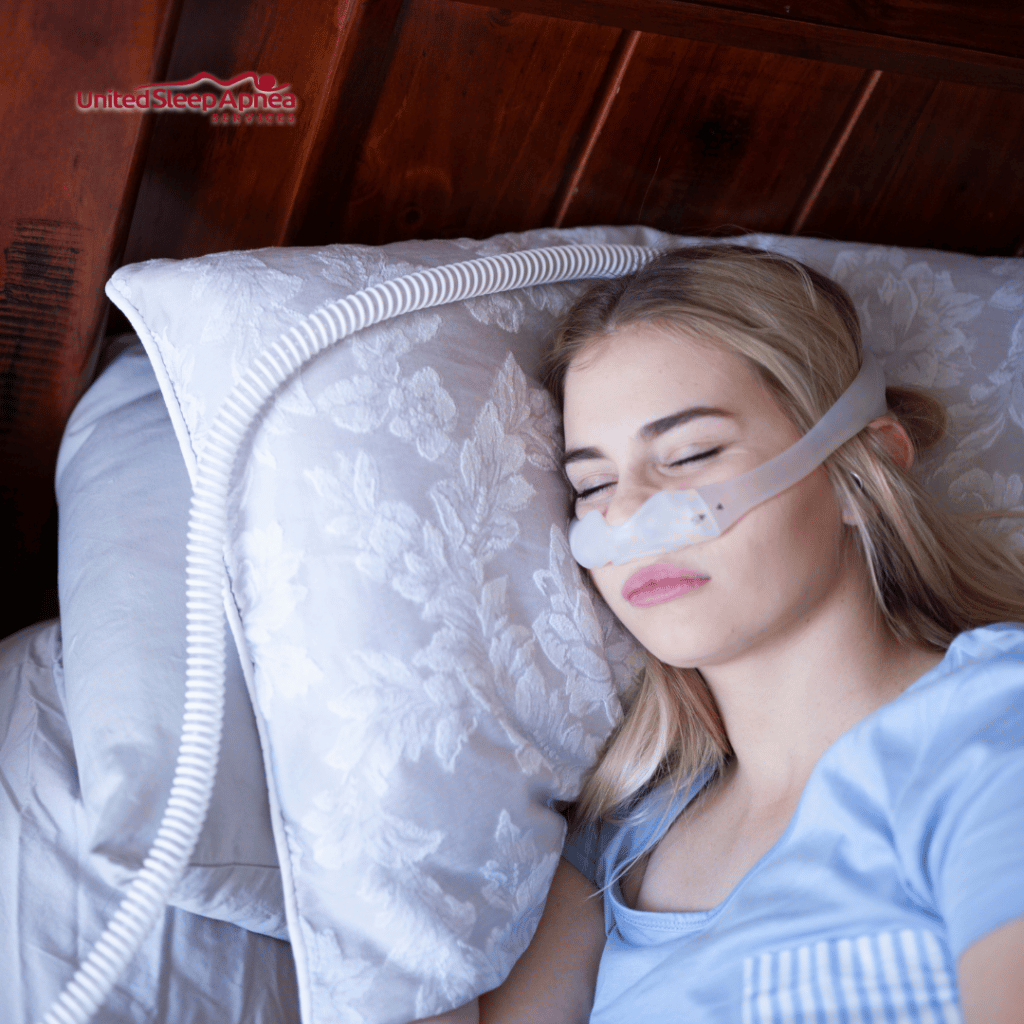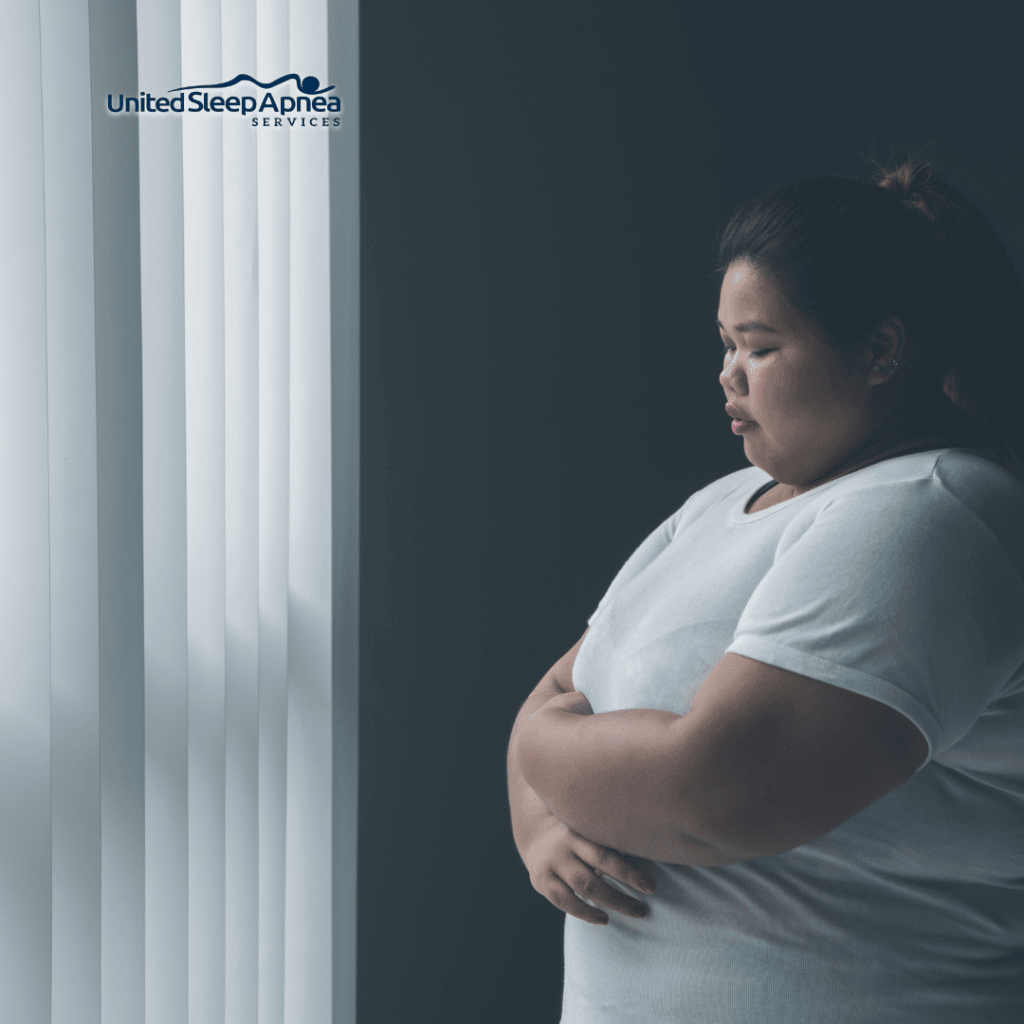Sleep apnea is often considered a male disorder that is often linked to excessive snoring and daytime sleepiness. It is a common yet dangerous sleep-related breathing disorder in which the breathing repeatedly stops and starts several times during sleep.
If you ask an average physician to describe a sleep apnea patient, most will picture someone who is overweight, middle-aged, sedentary, and male. While this may suggest that sleep apnea is a male disorder, it is more prevalent in women than we think. The occurrence of sleep apnea in the female population is increasingly being recognized in recent times, along with significant differences in symptoms, diagnosis, treatment methods, and consequences of sleep apnea between men and women.
Symptoms of sleep apnea in women are often different, less severe, and subtler than in men, along with shorter apneas and hypopneas and a lower hypopnea index (AHI). The prevalence of sleep apnea in women varies throughout their lifespan as they go through different stages: puberty, pregnancy, reproductive age, and the postmenopausal stage. The difference in the prevalence of this sleep disorder within the lifespan of a woman in comparison with that of a man is due to various pathophysiological factors, such as upper airway anatomy, hormonal differences, and chemoreflex.
How does Sleep Apnea differ between Men and Women
Men and women both experience obstructive sleep apnea, potentially the most common and dangerous sleeping disorder. Both genders experience sleep apnea differently, which was not completely understood until the recent study by Christine Won, Director of the Women’s Sleep Health Program at Yale Medicine. The study illustrated the gender differences regarding obstructive sleep apnea:
- Women are more likely to experience sleep apnea during REM sleep than during NREM sleep. REM or Rapid Eye Movement is a phase of sleep during which the brain is more active and has more intense dreams. Since REM sleep is only 20% of total sleep, women usually experience fewer episodes of apnea during their sleep. However, sleep apneas can be more severe and last longer during this phase of sleep, and they may be associated with a significant drop in oxygen levels in the body.
- Women are more likely to experience upper airway resistance syndrome. It is another sleep-related disorder but is less severe than sleep apnea. In upper airway resistance syndrome, a person may have a collapsible airway and a snoring problem but may not experience apneas in which breathing stops completely. This airway resistance also results in frequent awakenings and fragmented sleep.
- Women are more likely to wake up during a sleep apnea episode than men.
Why does Sleep Apnea in Women Go Undiagnosed?
Early research into sleep apnea was mostly targeted toward men. This means that most of the symptoms of sleep apnea that we know today were observed mostly in men. Moreover, the most common symptom of sleep apnea, loud snoring, is considered widely unacceptable for women. This has an impact on the number of women who report snoring problems. However, not all women suffering from sleep apnea will experience loud snoring or observable breathing disruption episodes. Women with sleep apnea might experience other symptoms that are non-specific to the disorder, such as:
- Headache
- Daytime sleepiness
- Depression
- Fatigue
- Restless sleep with frequent disruptions
- Anxiety
- Weight gain
- Trouble falling or staying asleep
- Forgetfulness
These symptoms are less likely to be linked directly to the sleep disorder.

Similar to men, women with obesity are also at great risk for sleep apnea. Evidence also suggests that excessive weight may play a greater role in the development of sleep apnea in women than in men.
Moreover, a study published in 2013 showed that women experiencing sleep apnea might have fewer and less subtle apnea episodes than men. This makes it difficult for their bed partners to notice their apnea episodes.
With medical practitioners not being as attuned to sleep apnea in women as in men, 9 out of 10 women suffering from sleep apnea go undiagnosed. Sleep apnea symptoms in women are more subtle than those in men and frequently do not fall on the list of traditional sleep apnea symptoms, so sleep apnea in women is frequently misdiagnosed with other conditions.
Often, sleep apnea in women is misdiagnosed with health conditions like:
- Fibromyalgia
- Hypochondria
- Hypertension
- Insomnia
- Menopausal changes
- Obesity

ARE YOU MISSING OUT ON THE MOST RESTORATIVE SLEEP OF YOUR LIFE?
Reduce your daytime fatigue with the latest diagnostic testing and physician services for improved health.
Our team of experts will listen to your concerns, guide you through the process, and answer all your questions.
Risk factors for Sleep Apnea in Women
Apart from symptoms, women also have specific sleep apnea risk factors that physicians might not know much about. These risk factors for sleep apnea may include:
Polycystic Ovary Syndrome (PCOS):
Women with this endocrine disorder are at risk of developing sleep apnea. A study conducted in 2019 showed that women with polycystic ovary syndrome (PCOS) are two times more likely to experience sleep apnea than women without PCOS. Alterations in female hormones like low estrogen and high androgen levels and increased visceral adiposity can increase the risk of sleep apnea in women.
Pregnancy:
Pregnancy is usually not associated with sleep apnea, but pregnant women may have an increased risk of developing sleep apnea as a result of sleep pattern changes, weight gain, hormonal changes, and changes in women’s anatomy that can affect breathing. A 2017 study showed that pregnant women with obstructive sleep apnea have a higher risk of developing gestational diabetes and hypertension. In addition, such women are also at high risk of developing pregnancy complications, which may require intensive care treatment in hospitals.
Menopause:
The risk of developing sleep apnea drastically increases when a woman enters menopause. Before the age of 50, men are 2-3 times more likely to experience sleep apnea than women. As the women age, the difference substantially decreases. This may be because female hormones (estrogen and progesterone) may have some protective effects on sleep-related problems in women. As the level of these hormones declines after menopause, the risk of developing sleep-related breathing disorders, including sleep apnea, increases. A 2017 study found that a reduction in estrogen levels due to menopause is linked to an increased risk of developing obstructive sleep apnea in women. Another study indicated that after menopause, the risk of sleep apnea in women increases by four percent every year.
How Does Sleep Apnea Underdiagnosis Affect Women's Health?
As sleep apnea is more likely to go undiagnosed or misdiagnosed in women, it can seriously impact women’s overall health. Sleep apnea episodes occurring in REM sleep can be a risk factor for various heart diseases and high blood pressure, regardless of what happens during NREM sleep.

Sleep apnea can lead to an increased risk of health problems such as depression, obesity, atrial fibrillation, chronic kidney diseases, behavioral and cognitive disorders, asthma, diabetes, pregnancy complications, metabolic conditions, and cancers. Sleep apnea is also associated with an increased risk of cardiovascular diseases like heart attack, stroke, heart failure, and hypertension.
When left untreated, sleep apnea may result in the development of serious health risks, including cardiovascular diseases, high blood pressure, obesity, diabetes, and stroke. Untreated sleep apnea may also lead to higher chances of road and work-related accidents.
Sleep apnea may also lead to problems with cognitive functioning, such as problems with attention, learning, and memory. People with sleep apnea may also accumulate a higher concentration of a specific type of brain protein that is linked to the development of Alzheimer’s disease. These severe risks due to sleep apnea are common in men and women alike.
We can now learn about the health risks associated with sleep apnea in women as studies look closely at gender differences in sleep apnea. Here are some risks associated with sleep apnea in women:
Cardiovascular diseases
Several studies show that women with sleep apnea may be vulnerable to various cardiovascular diseases due to sleep-related breathing. A study published in 2018 showed that sleep apnea and snoring in women might cause damage to the heart. In addition, sleep apnea may affect women’s hearts more severely than men, the results of this study support the results of the 2015 study that showed that obstructive sleep apnea in women is linked with significant damage to the heart and a greater risk of heart failure, enlargement of the heart, and coronary artery disease.
A 2013 study showed that people with obstructive sleep apnea may have less control over heart rate and blood pressure than those without sleep apnea. These controls or autonomous responses are more likely to be compromised in women suffering from sleep apnea than in men. This means that women may have a higher risk of developing hard-to-treat hypertension and cardiovascular diseases.
As already stated, women are more likely to experience episodes of sleep apnea during rapid eye movement sleep. A study published in 2018 showed that episodes of sleep apnea occurring during the REM sleep phase may be associated with the development of atherosclerosis, a cardiovascular disease in which the artery walls thicken and may cause stroke or heart attack.
Depression
Sleep apnea, when left untreated, may increase the risk of the development of depression in both men and women. A 2017 study showed that over half of people with depression also showed severe symptoms of sleep apnea. Furthermore, there are indications that women with sleep apnea are more likely than men to have depression, and that it is more severe.
Obesity
Obesity is a major risk factor for sleep apnea in both genders. However, sleep apnea can also lead to weight gain and obesity. Sleep apnea may contribute to obesity in many ways. Sleep apnea leads to excessive tiredness and reduces women’s ability to exercise.
A study conducted in Brazil in 2018 demonstrated the relationship between sleep apnea, obesity, and exercise in over 232 women aged 45-65 years. The study found that 39% of women had sleep apnea and 33% were obese. It also showed that obese women who had sleep apnea had comparatively lesser exercise ability than women with no or only one condition.

ARE YOU OR YOUR LOVED ONES AFFECTED BY SLEEP APNEA?
Our process is designed using a patient-centered, holistic curative model that focuses on lowering costs while improving outcomes.
We serve veterans, minorities, families, and those who can't get tests done at other facilities
How to Efficiently Diagnose Sleep Apnea in Women?
As women don’t experience classic symptoms like loud snoring and observable episodes of breathing disorders, diagnosing a woman for sleep apnea can be difficult. Sleep apnea symptoms in women may resemble some other health conditions, like depression, anxiety, hypertension, hyperchondria, cardiac illness, or menopausal changes. Hence, medical practitioners need to look beyond traditional symptoms to diagnose sleep apnea in women.
The only way to effectively diagnose sleep apnea is to study sleep patterns while monitoring various health measurements, such as heart rate, breathing rate, SPO2, etc., during sleep. Traditionally, the study is conducted overnight in a sleep lab, but recent advancements in technology have allowed patients to get a home sleep test to record their sleep pattern and health activities during sleep.
Measurements such as the Apnea-Hypopnea Index (AHI) and Respiratory Disturbance Index (RDI) can be used to effectively and unbiasedly diagnose sleep apnea regardless of symptoms experienced.
What is Apnea Hypopnea Index (AHI)?
AHI is the measure of the number of times a person has apnea or hypopnea during the night, divided by the number of hours of sleep. Sleep apnea is measured through AHI as follows:
- Normal sleep: AHI of ≤5 events or less per hour
- Mild sleep apnea: AHI of 5 to 14 events per hour
- Moderate sleep apnea: AHI of 15 to 29 events per hour
- Severe sleep apnea: AHI of >30 events per hour
An AHI score of moderate or severe sleep apnea should require immediate medical attention.
What is the Respiratory Disturbance Index (RDI)?
The Respiratory Disturbance Index is a measuring index similar to the AHI. It measures the number of times apnea and hypopnea events disturb sleep. This sleep disturbance is called respiratory effort-related arousal (RERA).
- Normal sleep apnea: <5 RERA events per hour
- Mild sleep apnea: 5 to 14 RERA events per hour
- Moderate sleep apnea: 15 to 30 RERA events per hour
- Severe sleep apnea: 30+ RERA events per hour
AHI and RDI indexes can provide better diagnosis and early detection of sleep apnea in women, even when they don’t experience regular sleep apnea symptoms.


